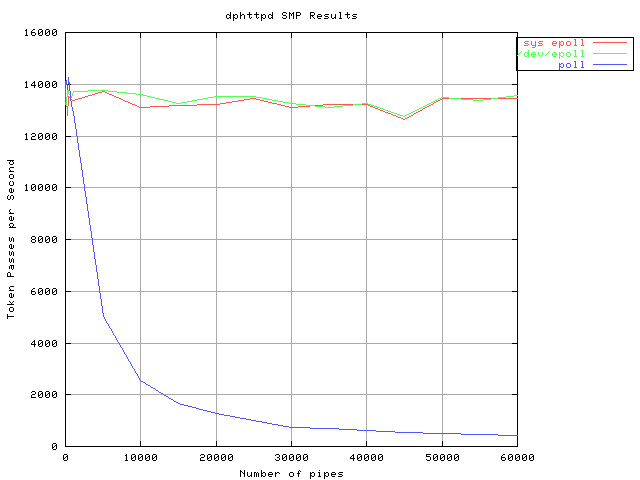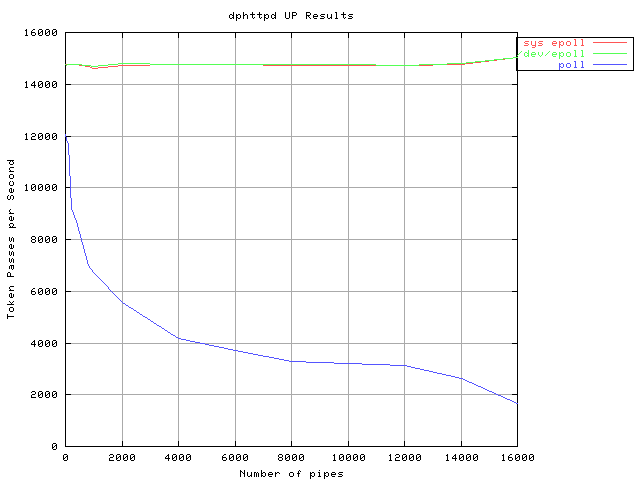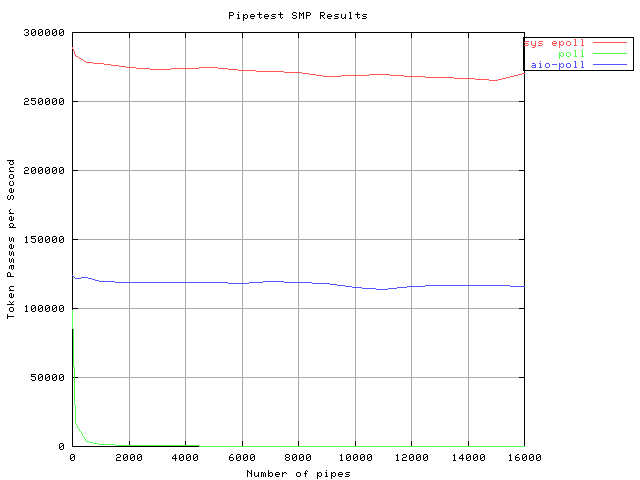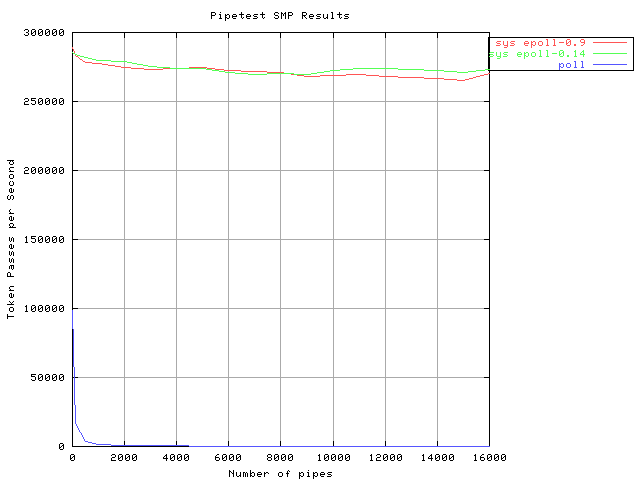
Davide Libenzi wrote an event poll implementation and described it at the /dev/epoll home page here. His performance testing led to the conclusion that epoll scaled linearly regardless of the load as defined by the number of dead connections. However, the main hindrance to having epoll accepted into the mainline Linux kernel by Linus Torvalds was the interface to epoll being in /dev. Therefore, a new interface to epoll was added via three new system calls. That interface will hereafter be referred to as sys_epoll. Download sys_epoll here.
The system call epoll_create() creates a sys_epoll "object" by allocating space for "maxfds" descriptors to be polled. The sys_epoll "object" is referenced by a file descriptor, and this enables the new interface to :
The system call epoll_ctl() is the controller interface. The "op" parameter is either EP_CTL_ADD, EP_CTL_DEL or EP_CTL_MOD. The parameter "fd" is the target of the operation. The last parameter, "events", is used in both EP_CTL_ADD and EP_CTL_MOD and represents the event interest mask.
The system call epoll_wait() waits for events by allowing a maximum timeout, "timeout", in milliseconds and returns the number of events ( struct pollfd ) that the caller will find available at "*events".
We tested using two applications: dphttpd
Software
The http client is httperf from David Mosberger. Download httperf here. The http server is dphttpd from Davide Libenzi. Download dphttpd here. The deadconn client is also provided by Davide Libenzi. Download deadconn here.
Two client programs (deadconn_last and httperf) run on the client machine and establish connections to the HTTP server (dphttpd) running on the server machine. Connections established by deadconn_last are "dead". These send a single HTTP get request at connection setup and remain idle for the remainder of the test. Connections established by httperf are "active". These continuously send HTTP requests to the server at a fixed rate. httperf reports the rate at which the HTTP server replies to its requests. This reply rate is the metric reported on the Y-axis of the graphs below.
For the tests, the number of active connections is kept constant and the number of dead connections increased from 0 to 60000 (X-axis of graphs below). Consequently, dphttpd spends a fixed amount of time responding to requests and a variable amount of time looking for requests to service. The mechanism used to look for active connections amongst all open connections is one of standard poll(), /dev/epoll or sys_epoll. As the number of dead connections is increased, the scalability of these mechanisms starts impacting dphttpd's reply rate, measured by httperf.
To run the latest sys_epoll patch download here.
where num_connections is one of 0, 50, 100, 200, 400, 800,
1000, 5000, 10000, 15000, 20000, 25000, 30000, 35000, 40000, 45000, 50000, 55000, 60000.
# httperf --server=$SERVER --port=$SVRPORT --think-timeout 5
--timeout 5 --num-calls 20000 --num-conns 100 --hog --rate 100

where num_connections is one of 0, 50, 100, 200, 400, 800,
1000, 2000, 4000, 6000, 8000, 10000, 12000, 14000, 16000.
# httperf --server=$SERVER --port=$SVRPORT --think-timeout 5
--timeout 5 --num-calls 20000 --num-conns 100 --hog --rate 100

David Stevens added support for sys_epoll to Ben LaHaise's original pipetest.c application. Download Ben LaHaise's Ottawa Linux Symposium 2002 paper including pipetest.c here. Download David Steven's patch to add sys_epoll to pipetest.c here.
To run the latest sys_epoll patch download here.

Same Hardware and Configuration as with the SMP pipetest above
with CONFIG_SMP = n being the only change.

Following are performance results comparing version 0.14 of the
(Download v0.14 here)
to the version, v0.9, originally used for the performance
testing outlined above.
(Download v0.9 here)
Testing was done using two measures:
pipetest details here. and dphttpd details
here..


The system call interface to epoll performs as well as the /dev interface to epoll. In addition sys_epoll scales better than poll and AIO poll for large numbers of connections. Other points in favour of sys_epoll are:
arch/i386/kernel/entry.S | 4
fs/file_table.c | 4
fs/pipe.c | 36 +
include/asm-i386/poll.h | 1
include/asm-i386/unistd.h | 3
include/linux/fs.h | 4
include/linux/list.h | 5
include/linux/pipe_fs_i.h | 4
include/linux/sys.h | 2
include/net/sock.h | 12
net/ipv4/tcp.c | 4
Due to these factors sys_epoll should be seriously considered for inclusion in the mainline Linux kernel.
Thank You to:
Davide Libenzi
Who wrote /dev/epoll, sys_epoll and dphttpd.
He was an all around great guy to work with.
Also Thanks to the following people who helped with testing and this web
site:
Shailabh Nagar,
Paul Larson ,
Hanna Linder, and
David Stevens.